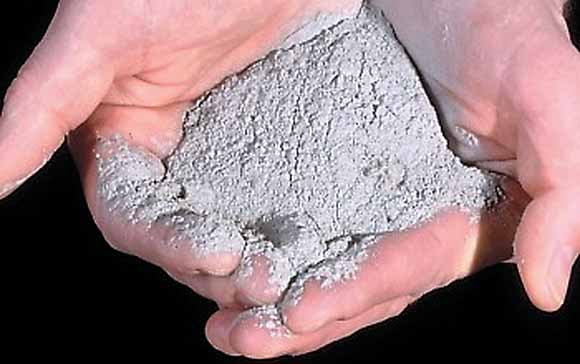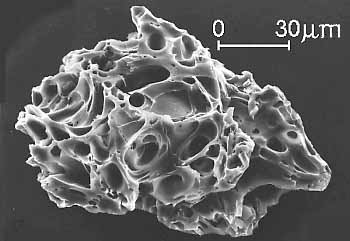The Yellowstone volcano is an increasing source of interest, being perceived as one of the volcanoes most likely to erupt in the United States and the subject of a number of articles, videos, and blog posts.
People have been sharing advice on how to survive if the volcano does end up erupting anytime soon. Now it’s worth looking at the potential effects of an eruption.
Many U.S. residents would be at risk of dying or suffering from the results of an eruption. When volcanoes erupt, they shoot out lava, which becomes ash during the eruption as it’s shattered into tiny particles. Volcanic ash is made up of tiny, dust-like fragments of jagged rock, minerals, and volcanic glass.
Volcanic ash is a big mess, being hard, abrasive, and not dissolving in water, according to the National Geographic encyclopedia. It can also conduct electricity when wet.
The main concern with an eruption at Yellowstone revolves around the span of the ash. How far away could it get?
Most of the United States could get covered with the ash, as it was in the previous large eruptions at Yellowstone. More than a dozen states could be covered entirely or partially with ash and debris.
Places nearby the eruption would also have to deal with the pyroclastic flow, which is basically an avalanche of the ash, gases, and rock mixed together. The flow can raze buildings, uproot trees, and cause massive damage and loss of life. In addition, calderas would form across areas in Montana, Idaho, Wyoming, and other states. These are broad volcanic depressions created as the ground collapses.
“The ash is thick (more than about 30 centimeters of ash) near the eruption source and a small fraction of a millimeter once you move 2,000 miles away. It’s fair to say that a trace of ash would be found over most of the United States, though it would only be thick enough to collapse roofs in the states closest to Yellowstone,” Jacob Lowenstern, scientist-in-charge at the Yellowstone Volcano Observatory, told Live Science.
The ash would also hang in the air for several days, blocking sunlight and making it difficult to breathe. The ash would decimate crops and make it near-impossible to grow food for a period of time. “A lot of people would perish,” said Stephen Self, director of the Volcano Dynamics Group at the Open University in the U.K, noting that if an eruption happened he would predict American refugees lining up at the Mexican border.

This map from the U.S. Geological Service shows the range of the volcanic ash and debris that was deposited after the three large Yellowstone volcano eruptions over the last 2.1 million years. as well as the Mount St. Helens eruption. (USGS)

Volcanic ash. (USGS)

Ash particle magnified about 200 times. (USGS)

A plume of ash from the volcano under the Eyjafjallajokull glacier covers the farm of Pall Eggert Olafsson, in Thorvaldseyri, Iceland, Monday, April 19, 2010. Meteorologists in Iceland said eruptions from the volcano were weakening and the ash was no longer rising to a height where it would endanger large commercial aircraft. (AP Photo/Brynjar Gauti)
More importantly for those outside the U.S., the effects of a Yellowstone eruption would be worldwide, according to the U.S. Geological Service, including the “injection of huge volumes of volcanic gases into the atmosphere could drastically affect global climate.”
Volcanic expert Harldur Sigurdsson highlighted the worldwide effects of volcanic eruptions to CBS earlier this year. He and the CBS team were in Iceland watching the Eyjafjallajokull volcano shoot out the big clouds of ash and huge rocks, some the size of cars.
“It was this ash that made Eyjafjallajokull the most disruptive eruption in years. The ash billowed up nearly 33,000 feet and drifted a thousand miles over Europe. One hundred thousand flights were cancelled. Ten million people were stranded for a week,” CBS reported. Still, volcanologist Haraldur Sigurdsson told us that kind of trouble is nothing compared to eruptions, elsewhere, in the recent past.”
Sigurdsson said: “And the best example of that occurred in 1815, when there was an eruption in Tambora volcano, in Indonesia. And a big, explosive eruption sent out an ash cloud up to about 30 miles. And it dispersed very widely. And also, a lot of sulfur came out of this volcano. And that led to global cooling. And produced what is known as the year without a summer in New England, in North America.”
The year without a summer was in 1816, caused by a volcano eruption halfway around the world.
The eruption in Iceland was a four on the scale of eight. Yellowstone is one of the places an eight could happen, according to Sigurdsson.
“The floor of the volcano is breathing like an animal. It’s rising, and moving up and down. Because of magma inside the volcano,” he said.
Yellowstone erupted about 640,00 years ago, as well as 1.3 million and 2.1 million years ago. These are the large eruptions.
“The Yellowstone-size eruption will occur. Of course, we have no idea when. It’s being monitored very, very closely. So there is no chance of it occurring without any warning. But it’s a devastating event,” said Sigurdsson.
“Devastating to aviation, communications and agriculture, volcanoes can change the course of history. Never before have so many people lived within striking distance--200 million worldwide. Science is good at warning of eruptions that are weeks away but, beyond that, it’s impossible to predict which one is next or how big it will be.”





